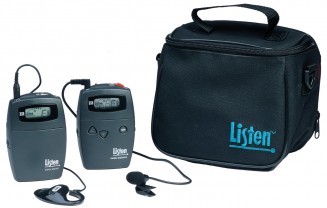What is it?
-
Conveying all auditory and signed information via sign language or voicing
-
Extensive schooling and training is required for interpreters
-
Code of conduct and standard of ethics are upheld. One or two interpreters are assigned and rotate every 20 minutes. Students who are deaf or hard of hearing Instructors Guide to Interpreter Services
-
Common services or assistive devices related to deaf or hearing impaired students listed below
ASL (American Sign Language)

-
Official language, visual in nature, has own syntax, grammatical structure
-
Grows, changes over time
-
Brain processes linguistic information through eyes instead of ears
-
Facial expressions and body movements convey information
CART (Computer-Assisted Real-time Transcription)

-
Provides an exact transcript of the lecture
-
Stenotype machine connected to a laptop with abbreviation software
-
Student reads transcription real-time from a second computer
-
Student can type questions/comments to transcriber during class
-
Questions/comments are read by transcriber
-
Student receives hard copy of transcript
Captioning for TV/Video/DVD

-
Narration, dialogue, music, and sound effects are converted to text displayed on a television screen
-
Typically white upper-case letters against a black background
FM System

-
Wireless, portable, battery-operated device that amplifies auditory signals
-
Instructor wears microphone connected to transmitter
-
Student wears headphones or ear buds connected to receiver
-
Classroom conversations are not amplified

